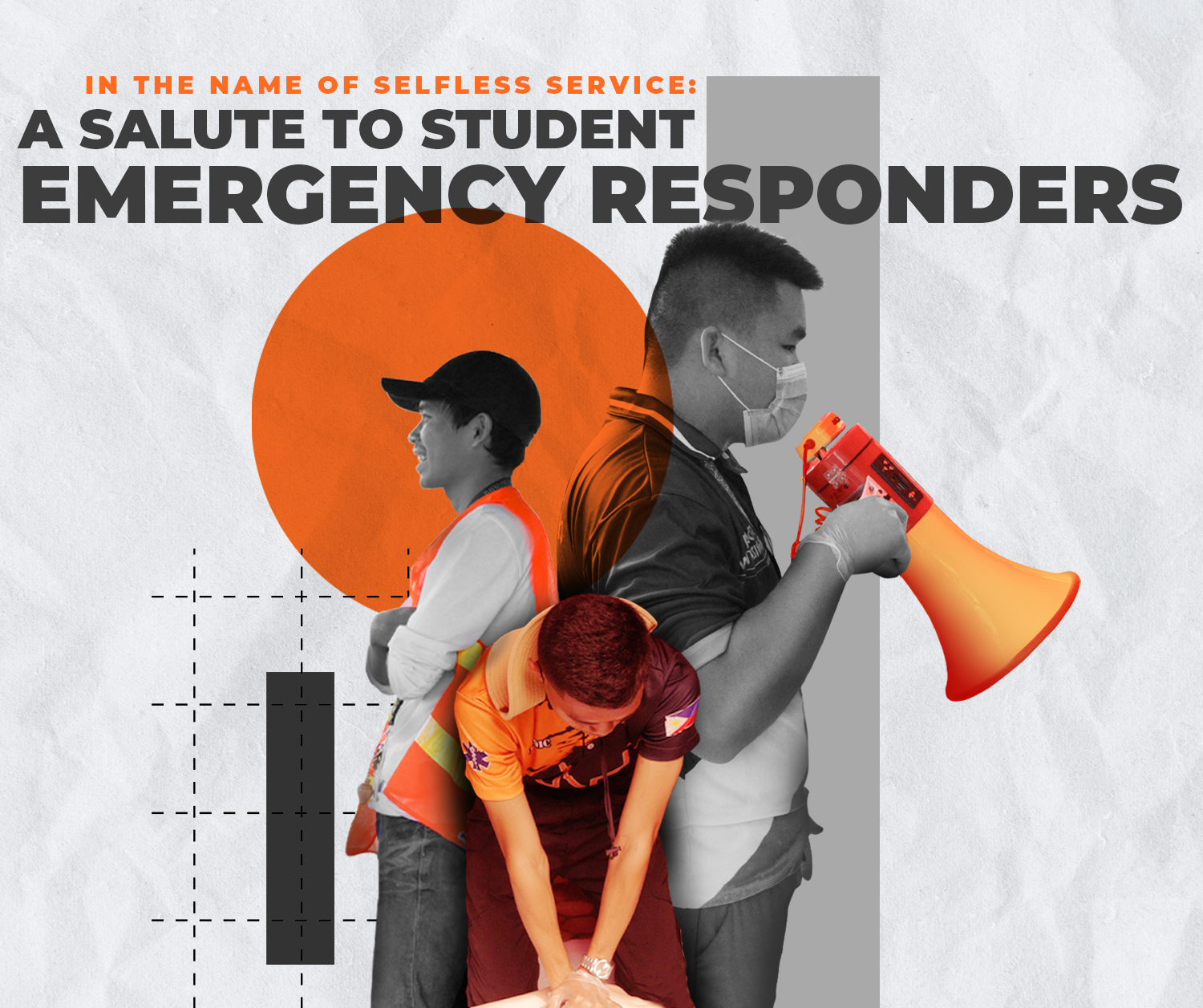feature contributed by Khenn N. Niez, PCNHS Intern
In the lively atmosphere of the 29th Charter Day Celebration and Kalibulung Festival 2024 of Davao del Norte State College, where cheers of joy were heard, echoes of selfless acts of service also resonated. Students in orange uniforms were tucked away from the spotlight but were always ready on the sidelines.
As athletes from diverse institutions pushed their bodies and wit to the limit to overcome the challenges of their events, a sudden misstep, a misguided throw, or an unfortunate accident would disrupt the festive atmosphere in a venue. Fast-paced activities would become frozen in time. A hush would fall over the crowd with tension escalating. Amidst the fervor of competition was a prayer for the injured athlete or fallen artist.
When there were unforeseen turns of events, the Student Emergency Response Team (ERT) was at the forefront of the action. Guiding them were Mr. Boyeth C. Pelone, chair of the Disaster Resiliency Administration Committee, and Ms. Gemma G. Gervantes, head of the Medical and Dental Services.
Recalling the challenges faced by emergency response teams, Pelone emphasized the unpredictable nature of emergencies so that preparedness would go a long way, “we focused on training, activities, and collaboration na makatabang sa amoa (that would help us).” He added that through rigorous training and practice in communication, the ERT could adeptly navigate challenges.
The student response team also reported to the medical and dental unit the number and cases of injured individuals during the week-long celebration. Nurse Cervantes exhibited his concern for the students and her perspective on the ERT’s role, “Kay ginalantaw man gud siya especially sa atoang admin nga si DNSC is mahimo siyang resilient institution in terms of disaster, mapa-natural or anthropogenic or human-induced disasters mao na siya ang ginalook-forward sa college (It is hoped for, especially by the DNSC administration, to make the college resilient in terms of disasters, whether it be anthropogenic or human-induced).”
She also emphasized the importance of the ERT’s assistance to 12 injured students, addressing minor injuries, including abrasions, sprains, and eye irritation. A participant from the Institute of Aquatic and Applied Sciences required further medical attention and was promptly transported to Carmen District Hospital.
The swift action and the continuous development of skills of the student emergency response team displayed DNSC’s commitment to a safe environment for all its stakeholders.
Looking ahead, Pelone and the administrators envision a future where emergency response is fortified through the integration of Disaster Risk Reduction (DRR) systems and climate change adaptation initiatives. By developing a comprehensive DRR Manual and Plan, DNSC aspires to evolve into a resilient institution capable of effectively addressing both natural and human-induced disasters.
Poster Edited by: Kent Narciso, DNSC IC-Intern
